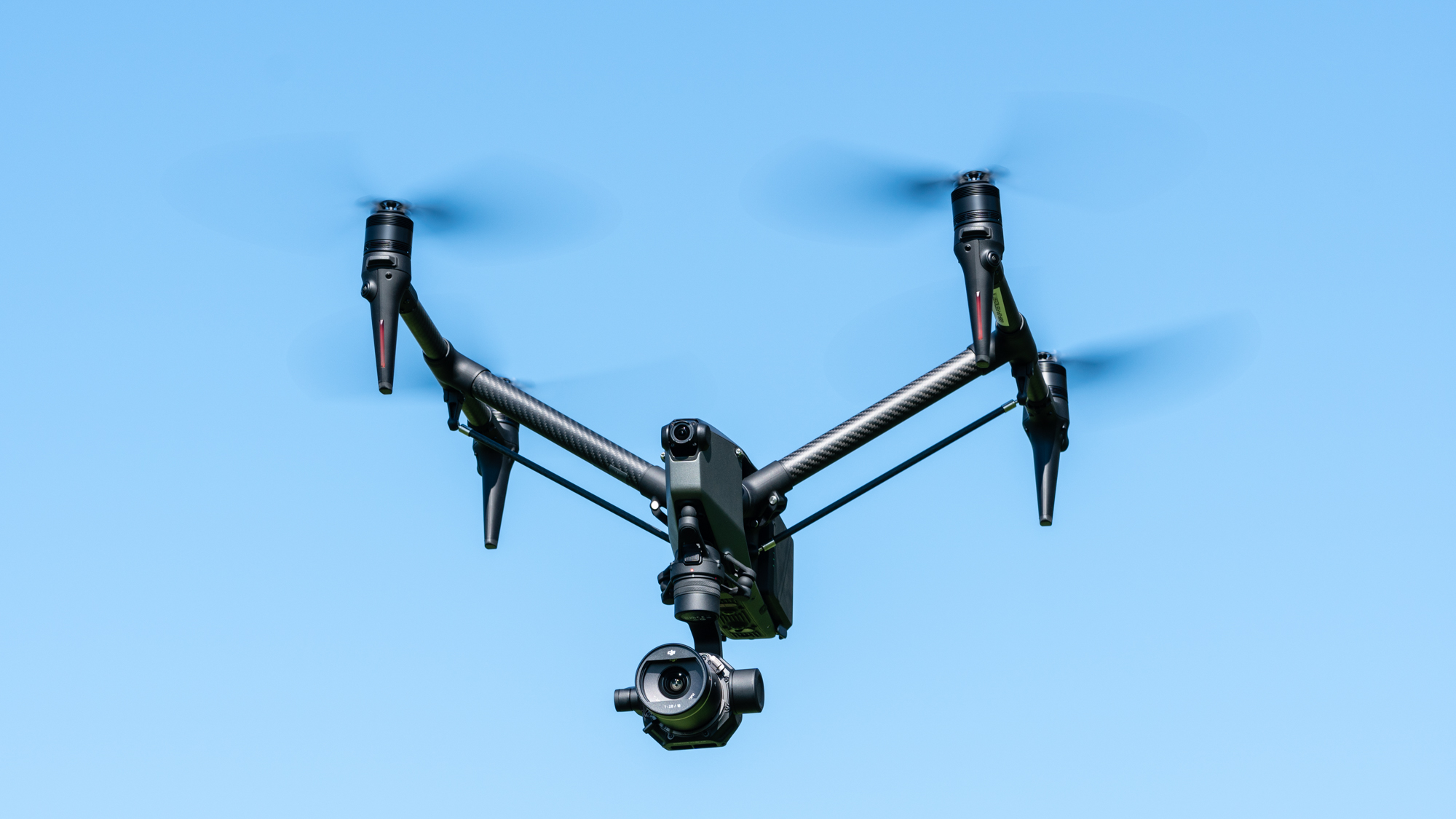
Camera: 44.7MP Full-frame Zenmuse X9-8K Air Gimbal Camera
Video resolution: Up to 8K
Frame rates: 8K up to 75fps / 4K up to 120fps
Video transmission range: FPV Camera approx. 9.32 miles (FCC), 4.97 miles (CE/SRRC/MIC)
Flight modes: Sport, Normal, Function, Attitude
Batteries: 4280 mAh / up to 28 minutes flight time (two used at once)
Charger type: Battery Charging Hub 100-240 V AC, max 8 A
Weight: 140.91 oz / 3,995 g (includes gimbal camera, two batteries, lens, PROSSD, and propellers)
Dimensions: 27.9 x 6.9 x 19.7 inches / 709.8 x 176 x 500.5 mm (in Travel Mode)
Drones come in a variety of shapes and sizes, offering features aimed at specific use cases with the best drones available offering something for everyone. The majority of models out there cover the crossover between consumers and prosumers, but there are models aimed specifically at high-end professional use.
Now, this is where DJI’s most recent professional drone model, the DJI Inspire 3, comes in. It’s aimed at professional filmmakers and drone pilots working in building inspections and surveying.
The DJI Inspire 3 is primarily a drone for cinematography and features fast, nimble, and precise flight alongside excellent image quality thanks to the new full-frame Zenmuse X9-8K Air Gimbal Camera. This camera is compatible with four lenses that are sold separately and can capture 44.7MP photos in Raw and JPEG alongside video in 8K up to 75fps and 4K up to 120fps. Plus, there are many features and additional accessories aimed at professional filmmaking at the highest levels.
This is a large and heavy drone at 140.91 oz/3,995 g when compared to consumer models such as the DJI Mavic 3 series, and the set-up time is longer, so it’s nowhere near as easy to transport as smaller consumer models. The size and weight also mean that it needs to be flown further away from people and built-up areas than smaller drones (unless you have professional permissions to do so) which means it’s ultimately not suitable for the everyday consumer.
That certainly doesn’t mean you can’t buy this high-spec drone if you’re a passionate hobbyist and have the budget to do so, but you do need to be aware that the DJI Inspire 3 is much less convenient than smaller models such as the DJI Mavic 3 Classic and the DJI Mini 3 Pro, which are both excellent models that are ideal for consumers and professionals alike.
The Inspire 3 Combo kit costs $16,499/£13,419 without any lenses or the Inspire 3 Raw License for CinemaDNG and Apple ProRes RAW codecs, so it’s an incredibly high-end drone with a professional price tag to match.
DJI Inspire 3 review: Design
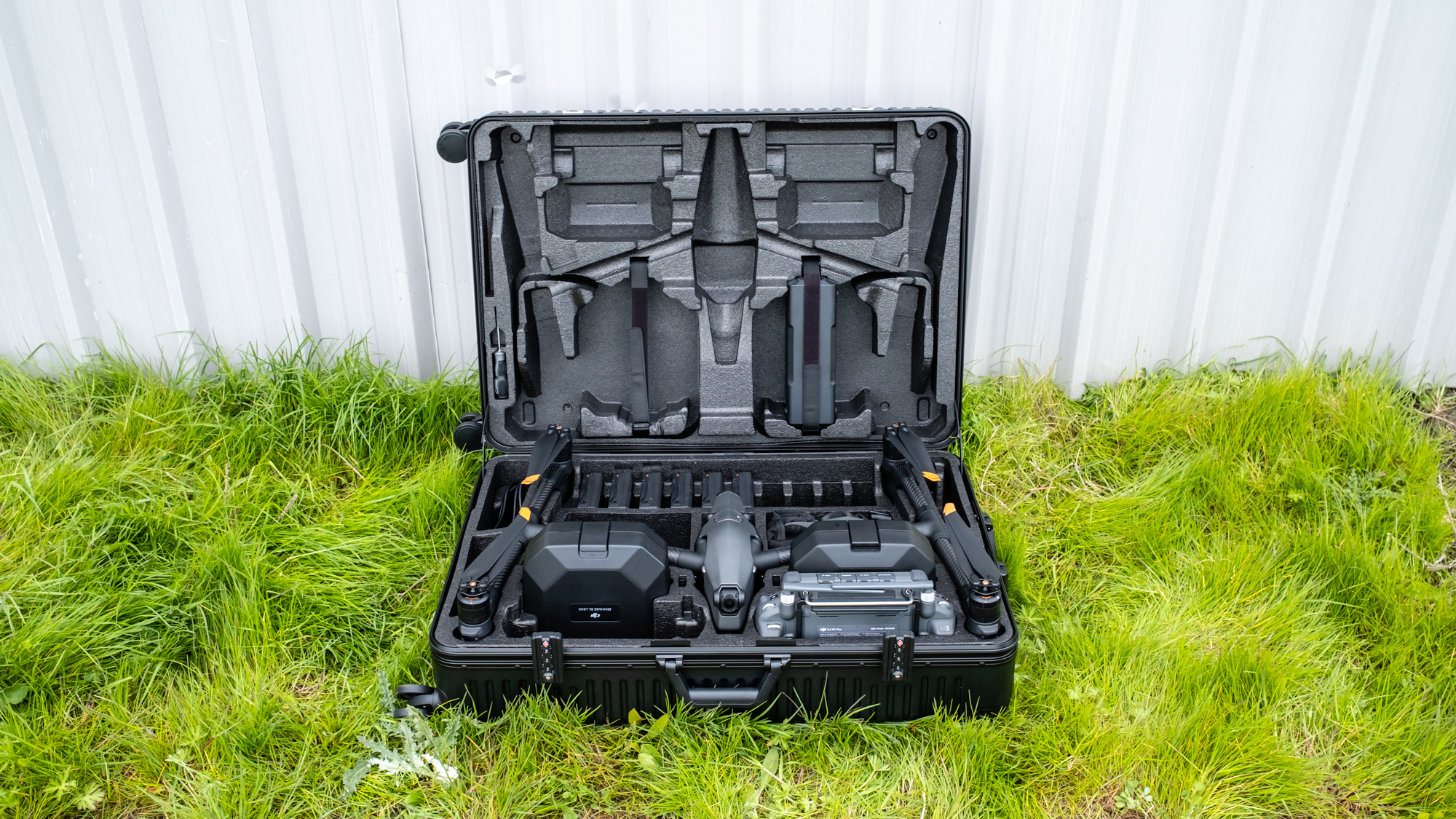
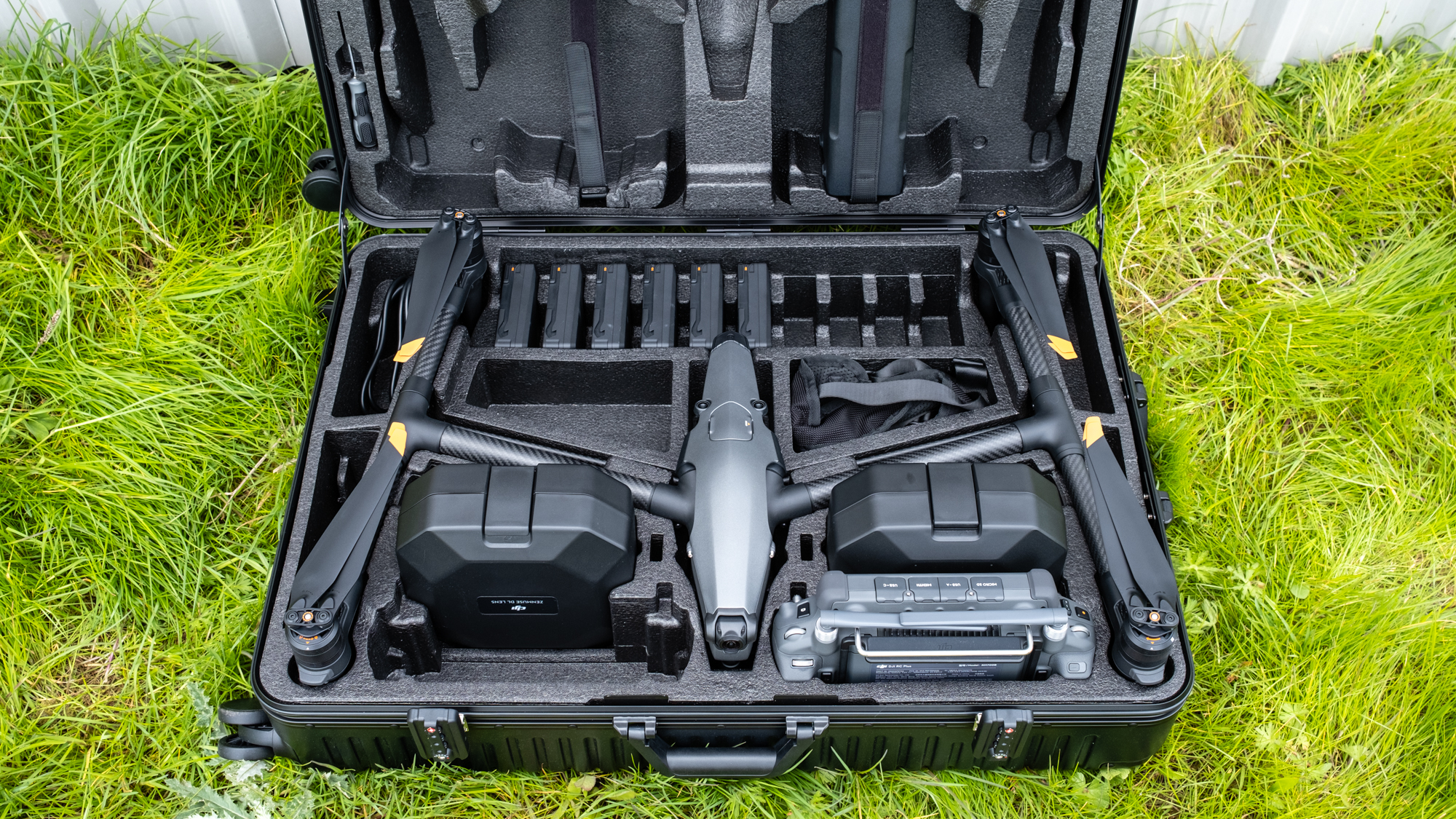
- Travel Mode reduces size
- FPV and gimbal cameras
- Large and heavy
The DJI Inspire 3 is a large and heavy drone compared to consumer models at 27.9 x 6.9 x 19.7 inches/709.8 x 176 x 500.5 mm in Travel Mode. This is a kind of folding mode where the drone uses a powered mechanism to flatten for transportation and storage after the camera and gimbal have been removed. And, unlike previous Inspire models, the new folding propellers can be left attached in the trolley case for convenience. Including the gimbal camera and a lens, two batteries, a PROSSD, and propellers, the Inspire 3 weighs 140.91 oz/3,995 g which is heavy when compared to consumer drones, but, in reality, that’s considered lightweight for a professional model.
The main body has a locking gimbal attachment at the front and the landing gear rises and falls during take-off and landing. This feature can also be adjusted manually during flight to take advantage of Tilt Boost 80-degree upward shooting with the landing gear down, and 360-degree Pan of the camera with the landing gear up.
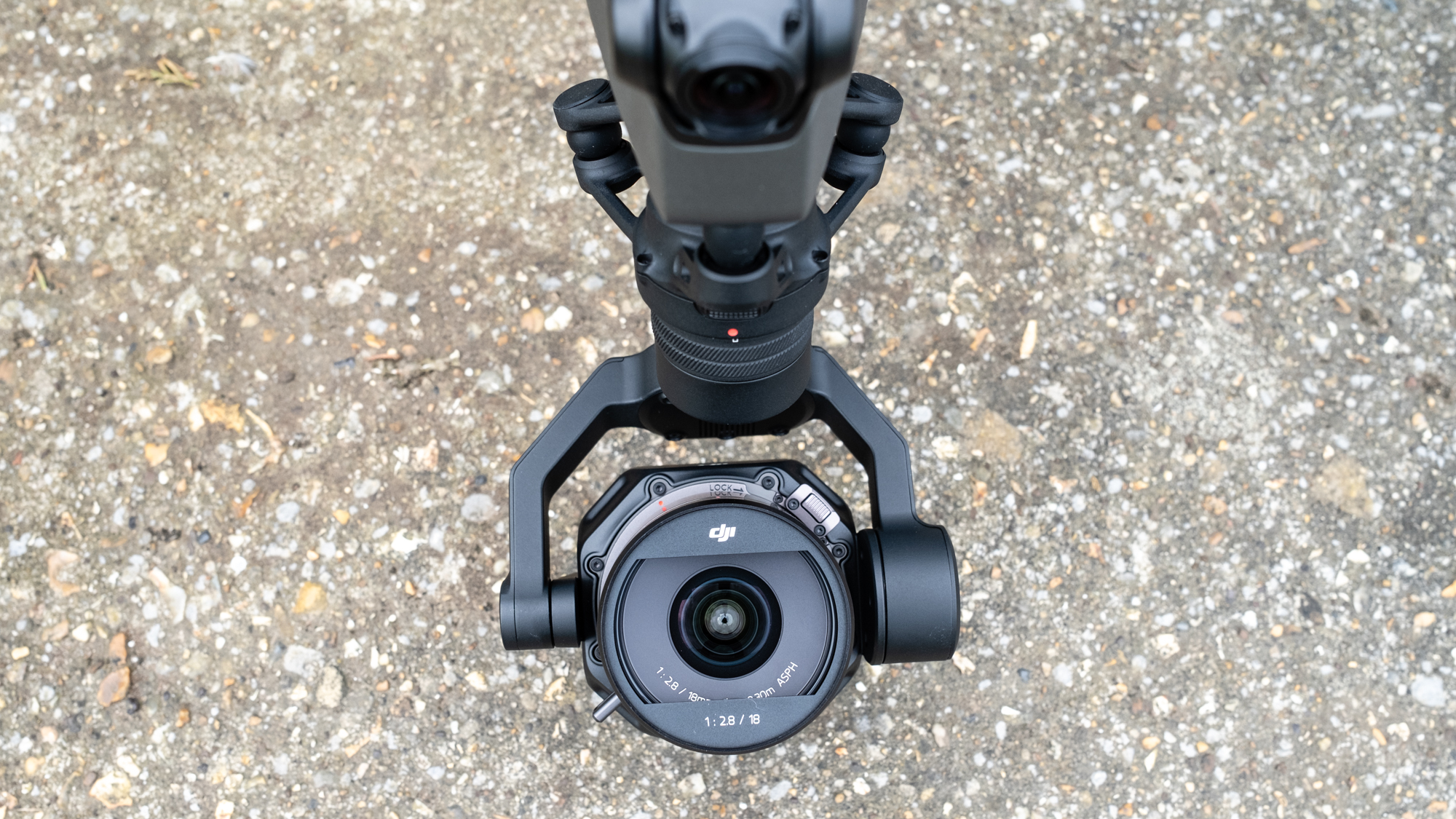
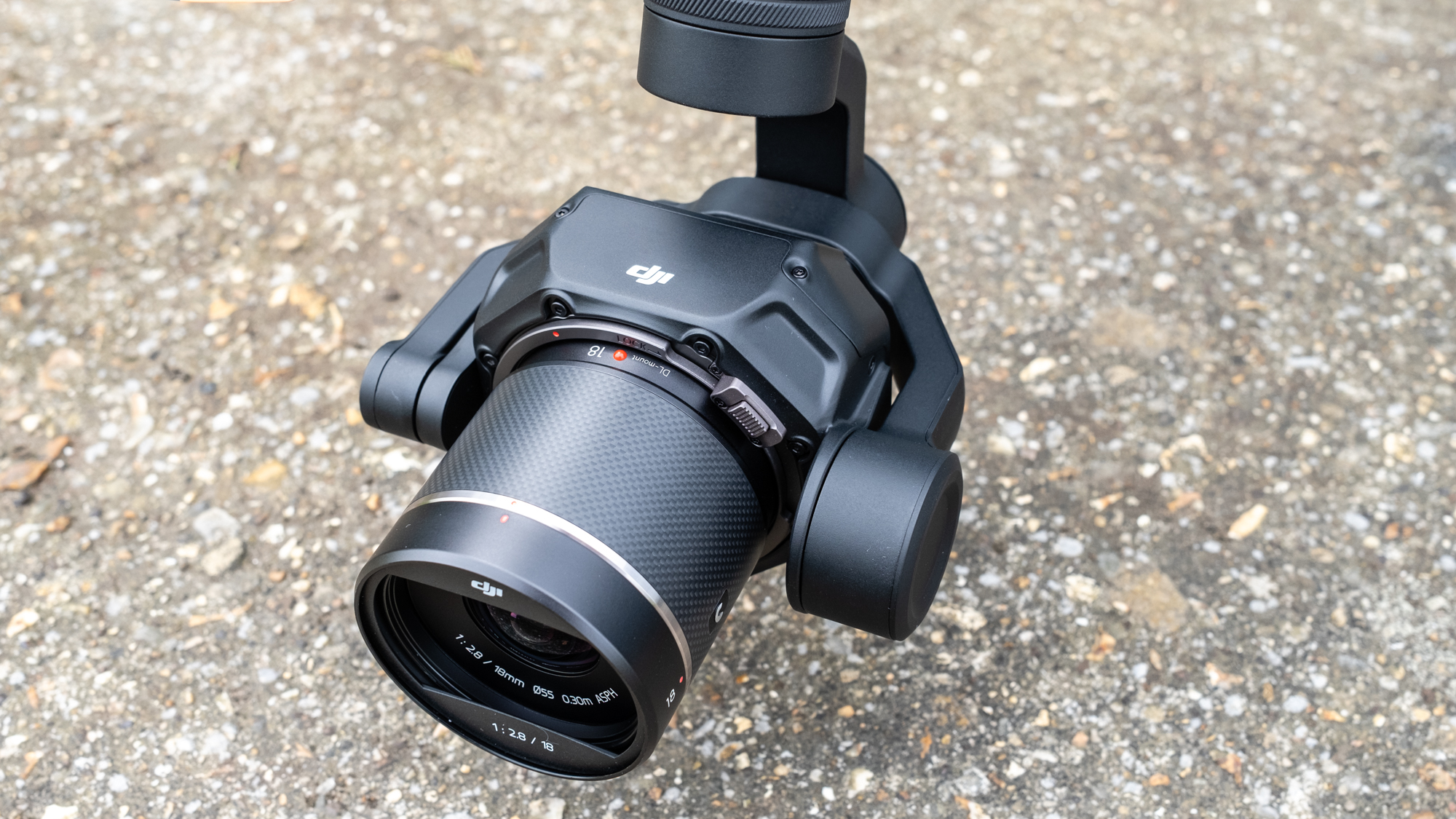
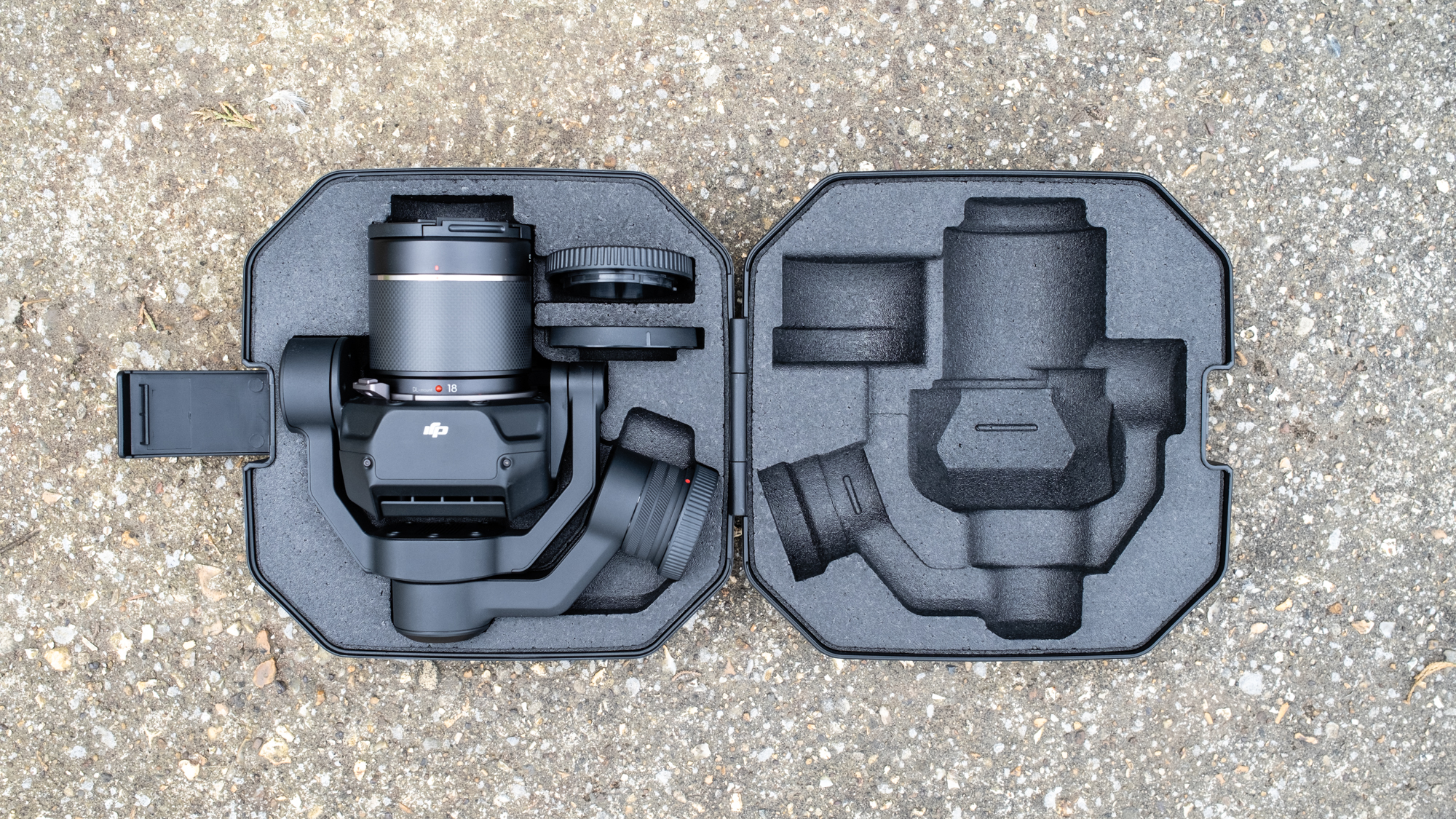
Then there are two batteries attached to the rear of the drone that can provide up to 28 minutes of flight time. Of course, this is dependent on conditions and flight style. However, during our testing we found that the flight times were around 18 minutes per pair of batteries.
Alongside the main gimbal camera, there’s also a 161-degree ultra wide-angle FPV lens with a 1/1.8-inch night-vision sensor that can be used by the pilot for more precise flight control. This is particularly useful in professional filmmaking because the pilot can use the FPV camera while a camera operator, using a second DJI RC Plus controller, can take care of camera control and filming that ultimately produces much more impressive video. The DJI Inspire 3 can also be operated by a pilot working alone, and in this situation the main camera feed can be viewed on the controller screen.
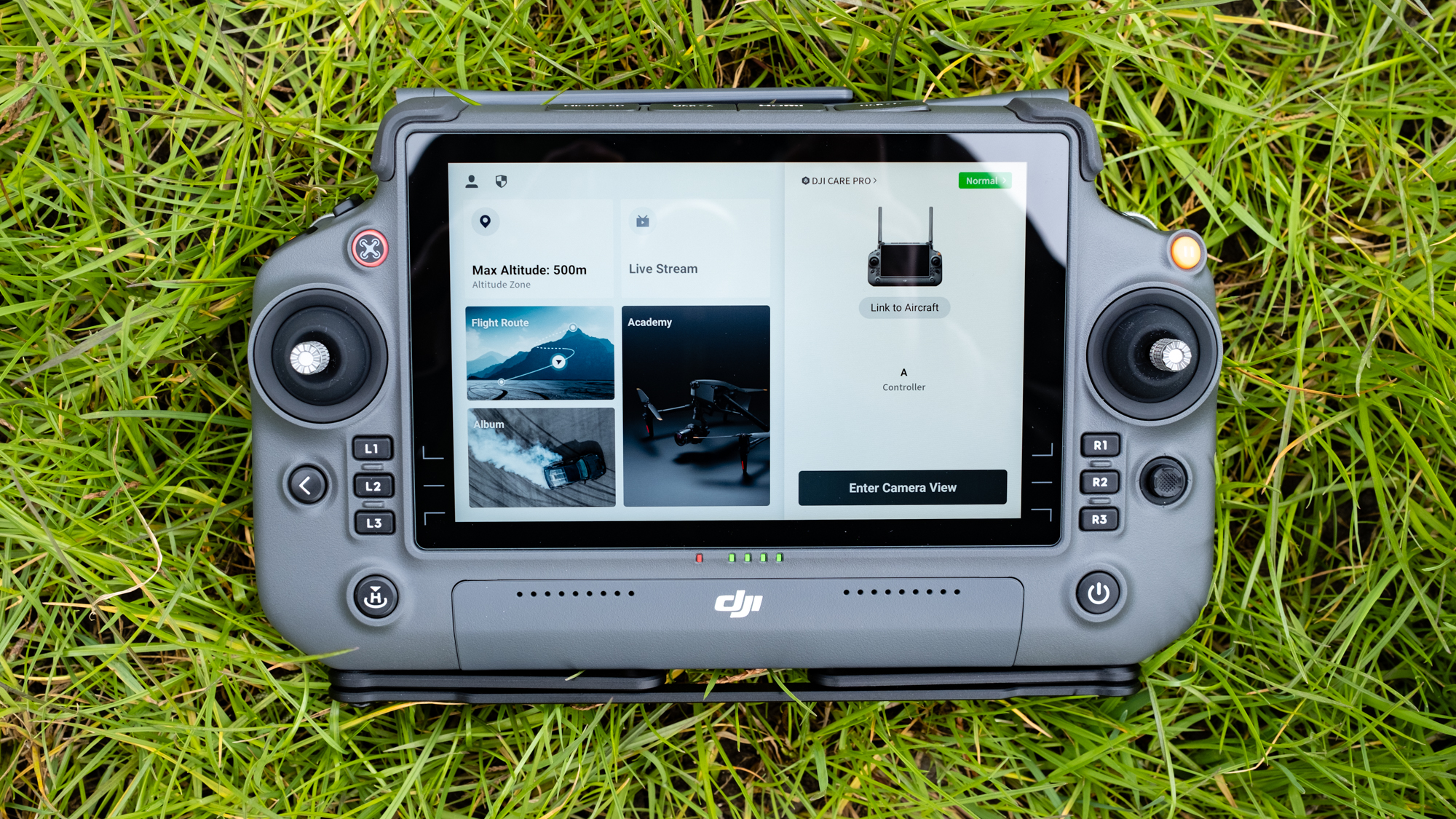
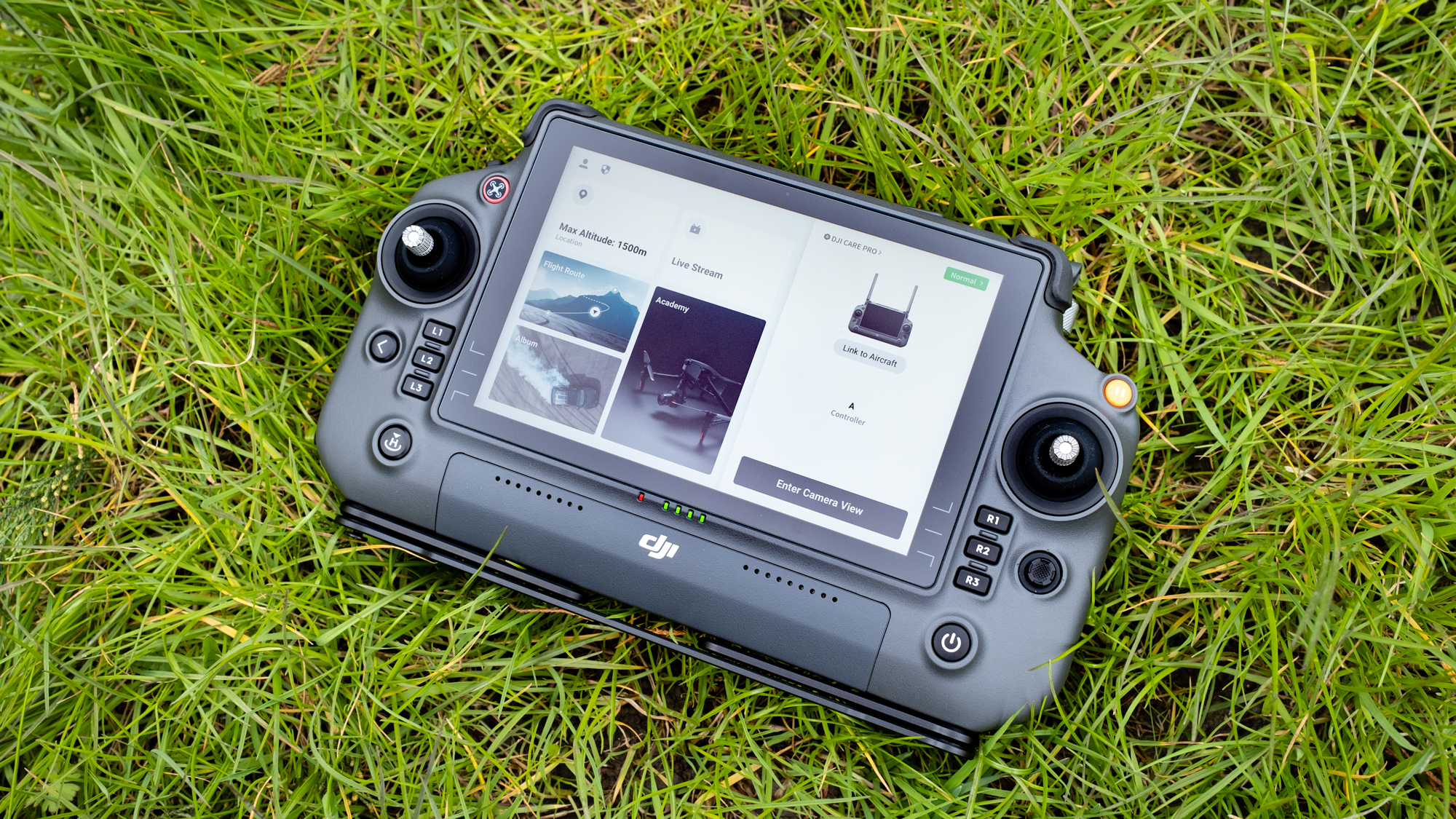
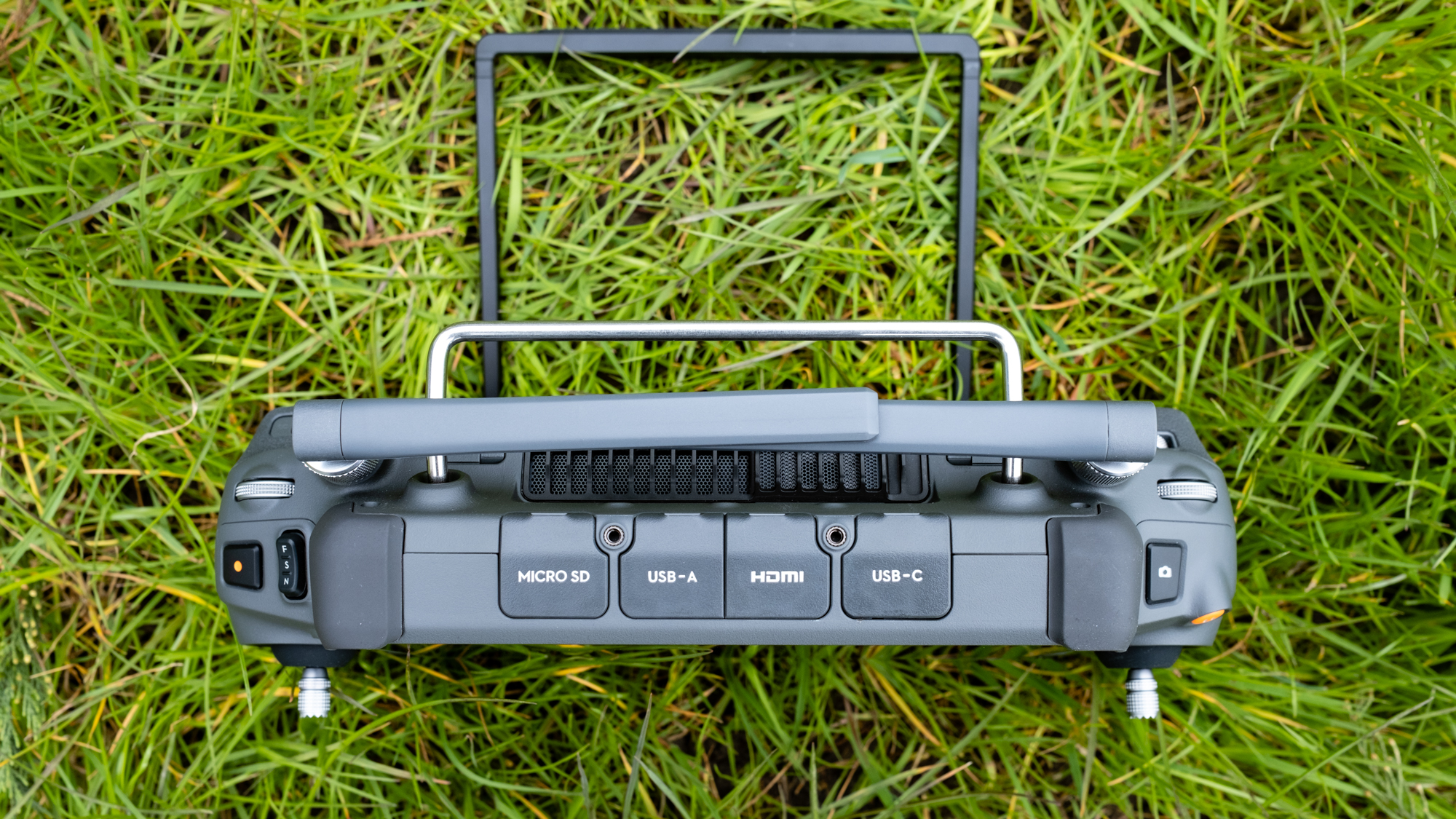
The DJI RC Plus controller features a 7-inch 1,200-nit touchscreen with direct access controls for adjusting camera and gimbal settings quickly and easily. Build quality is excellent and designed for professional use, and although it’s quite sizable it’s comfortable to use. For use over longer periods, a shoulder strap and rear frame help to support the controller which can offer up to three hours of use on a single charge. Batteries are also hot-swappable and a larger capacity external battery can be used while an external monitor can also be connected to the controller.
DJI Inspire 3 review: Functionality
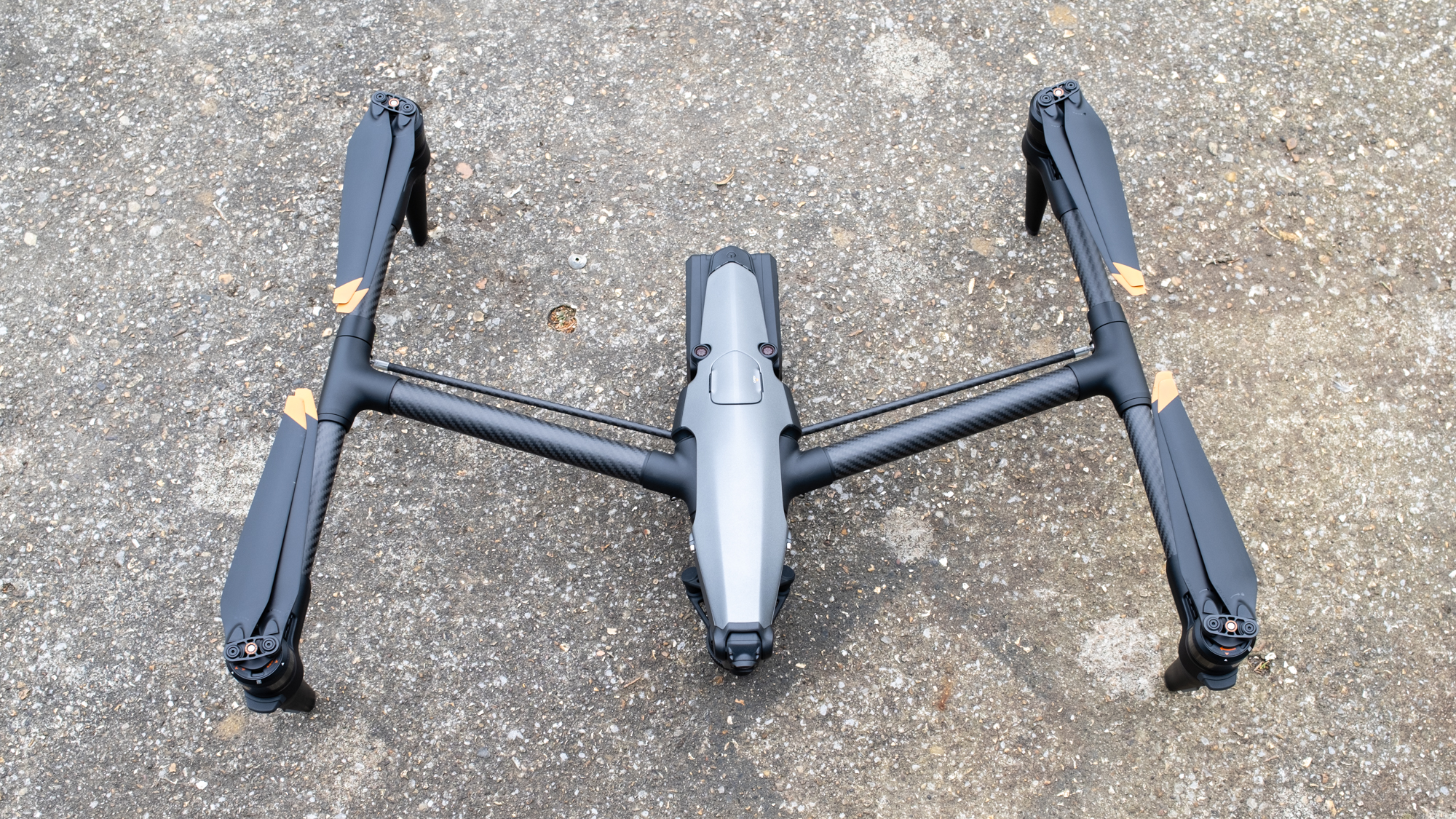
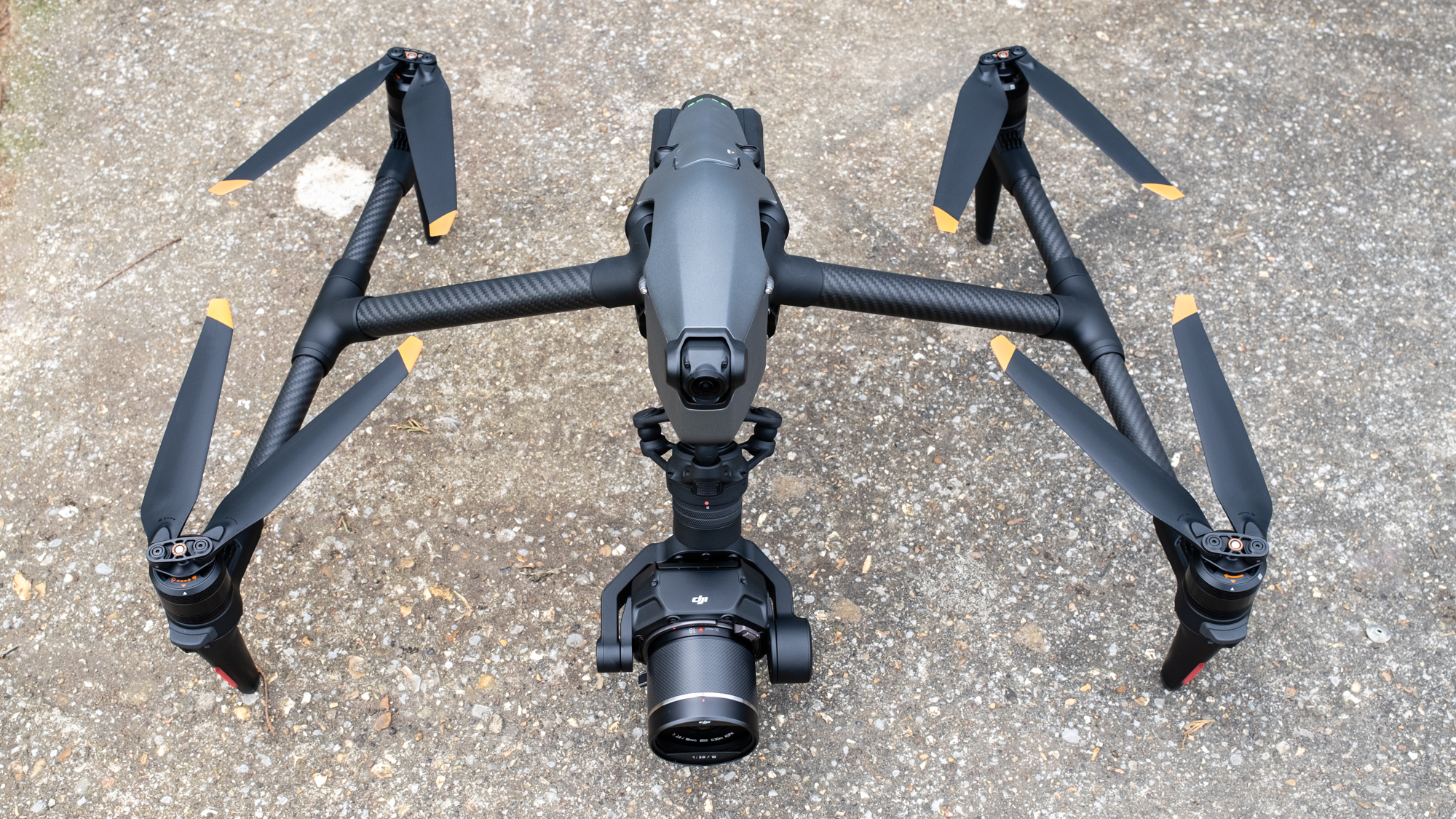
- Advanced obstacle avoidance
- Waypoint Pro & 3D Dolly
- 58 mph max speed and highly maneuverable
As you’d expect from a large professional drone, the DJI Inspire 3 is powerful with a top speed of 58 mph and a wind resistance of 31 mph. And, despite its large size and heavy weight when compared to consumer drones, it’s actually more agile with the ability to make fast and smooth turns alongside sharp ascents and descents. The controls are also incredibly precise, which combined with DJI’s most advanced collision avoidance and features including Waypoint Pro and 3D Dolly, make it perfect for flight in complex environments such as film sets.
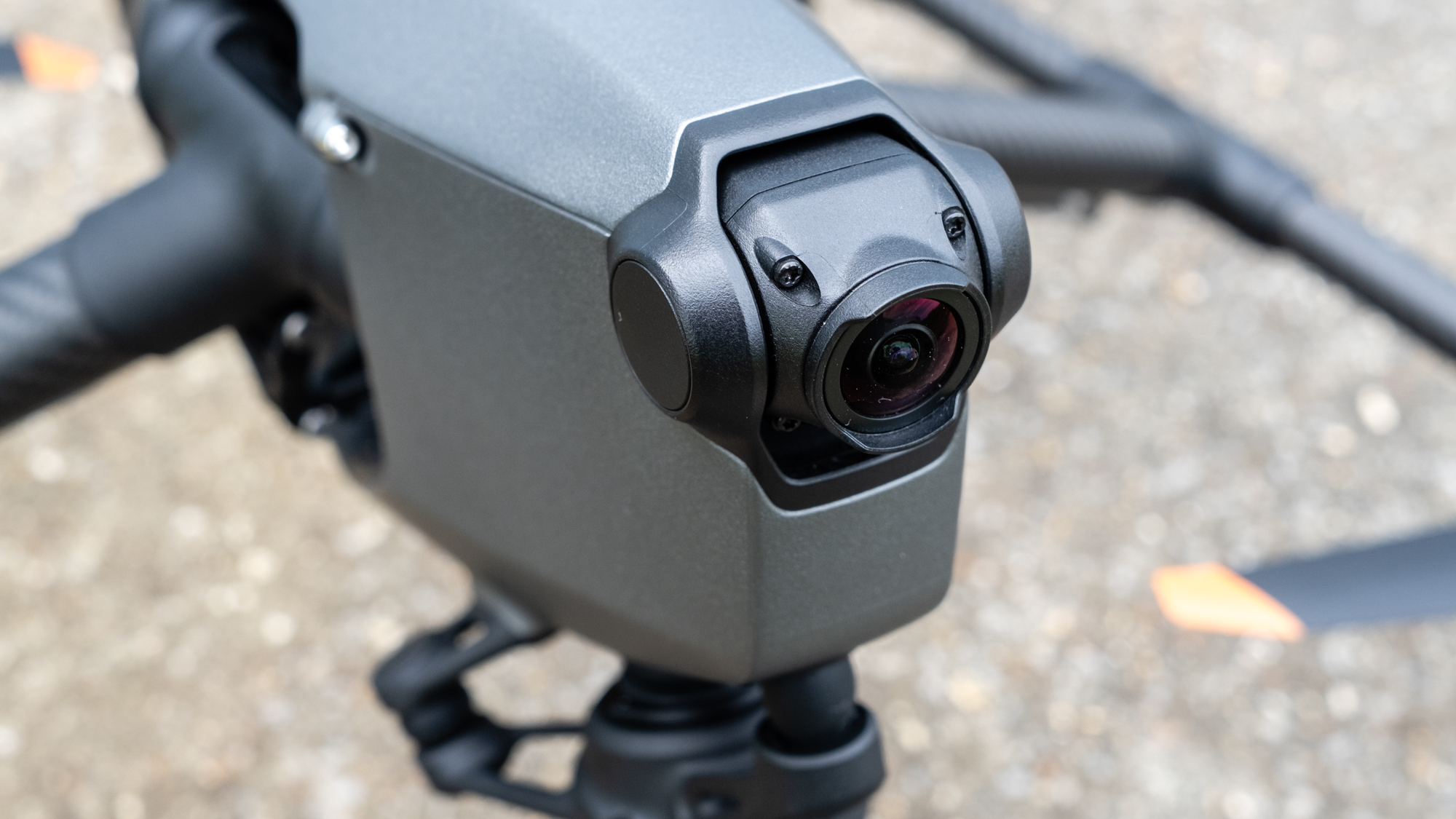
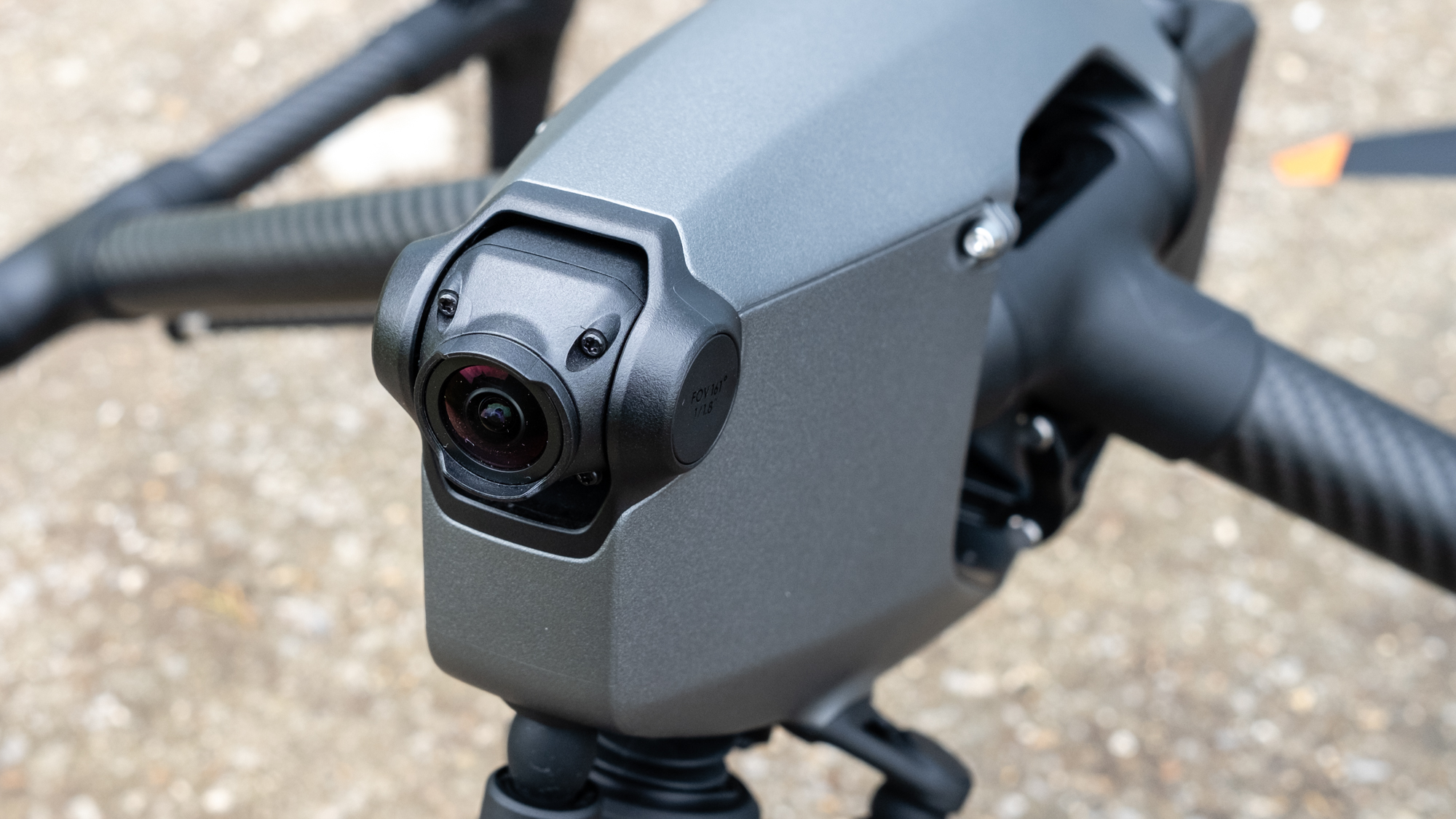
Satellite positioning is provided by GPS, Galileo, and BeiDou, while the Omnidirectional Sensing System can detect obstacles in all directions and distances using six fisheye sensors, two wide-angle sensors, and one omnidirectional ToF sensing system, which offers customizable settings and is highly effective. Plus, when obstacle avoidance is switched off, the pilot can still see the distance of obstacles on the controller screen, which is customizable depending on requirements, alongside an audio alert. This makes the Inspire 3 incredibly safe regardless of whether obstacle avoidance is switched on or off.
In terms of flight features, there’s nothing like Quickshots (automated flight patterns for video) available. But, Waypoint Pro provides precise route and shoot planning where the camera and gimbal can also be programmed or controlled manually while the Inspire completes the programmed route. Routes and camera/gimbal programs are repeatable so the same shots can be captured over and over again – ideal in filmmaking and surveying. Then there are 3D Dolly modes that can produce traditional camera movements such as dolly and crane but without the need for the hardware that’s traditionally required for these.
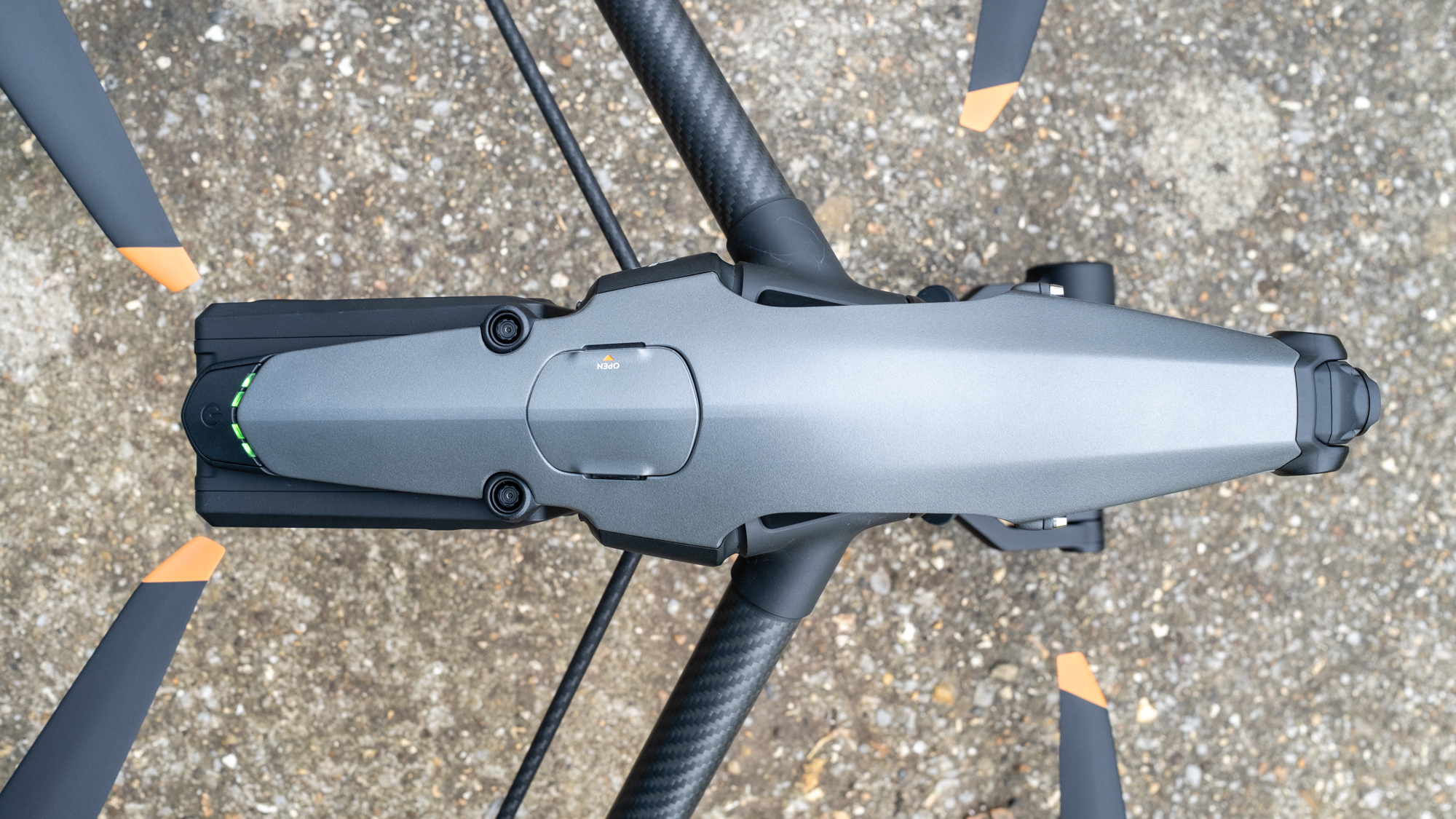
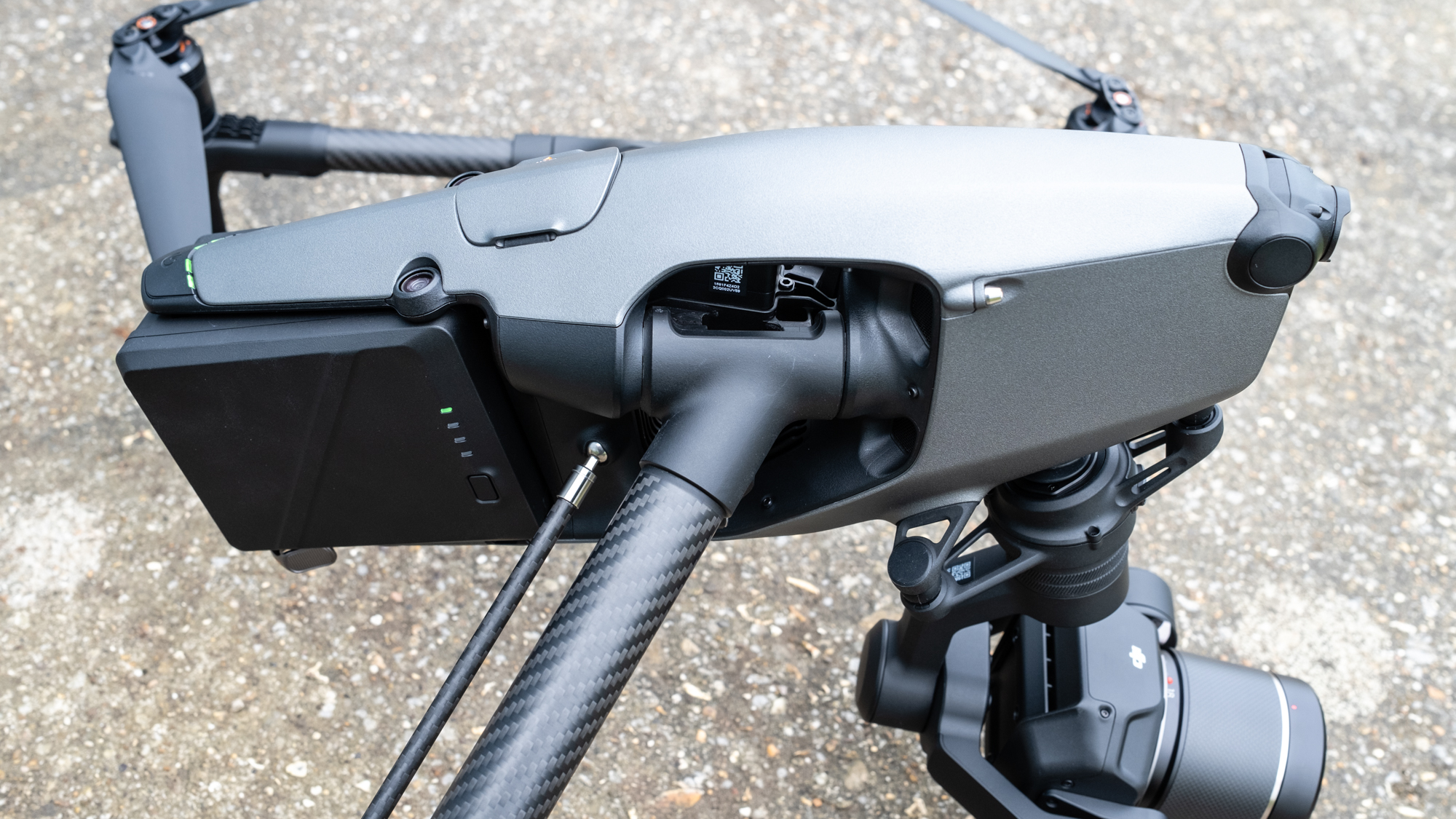
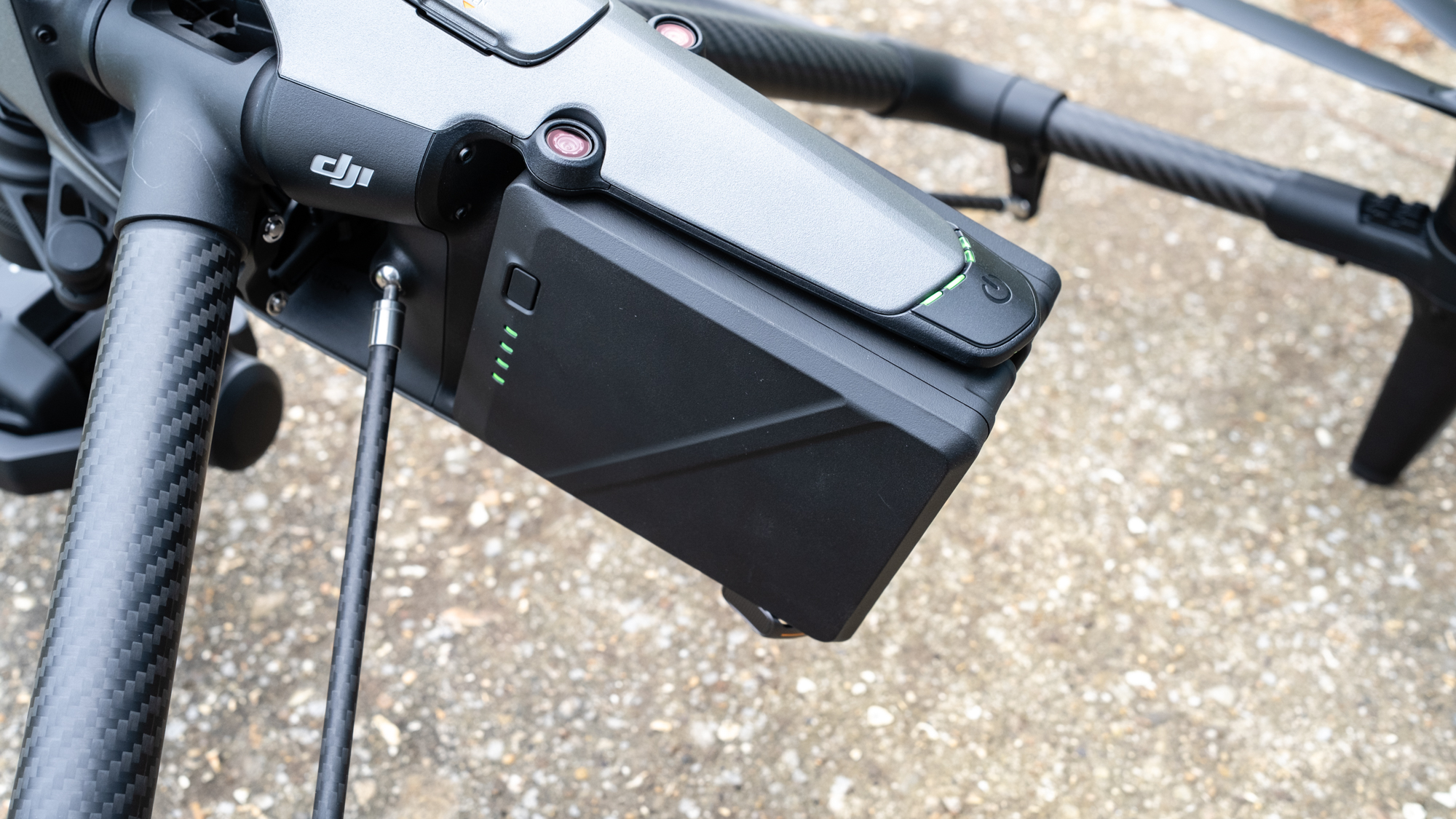
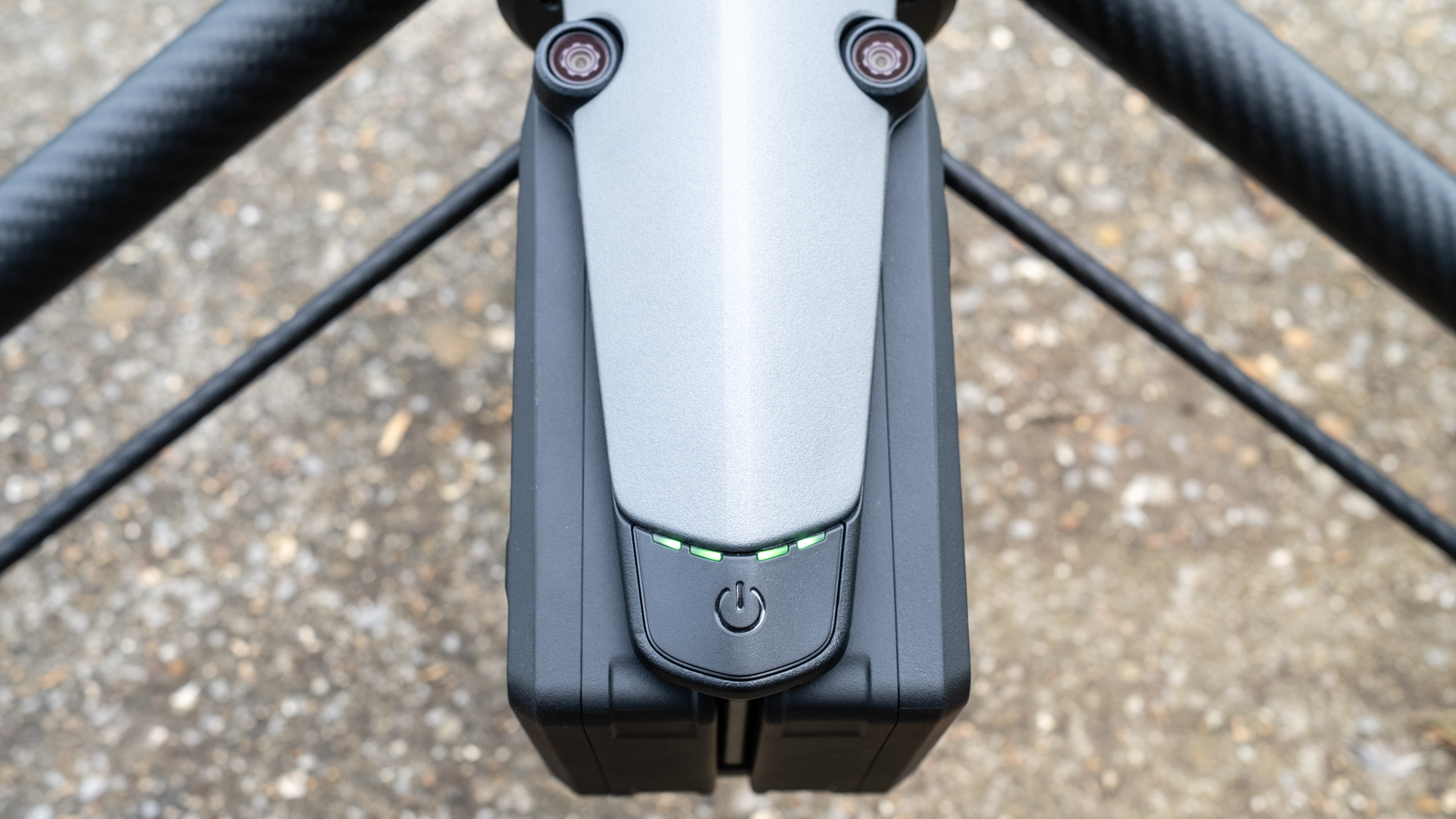
The DJI Inspire 3 features front and rear-stacked ceramic antennas with anti-magnetic-interference capabilities for increased flight accuracy and safety. And, although Waypoint Pro is excellent for creating and executing autonomous flight, an optional D-RTK 2 Mobile Station can be used to increase flight accuracy when using Waypoint Pro to 10 mm. This is an expensive and specialist optional accessory that costs $3,600/£2,700 but could be invaluable in some situations.
DJI Inspire 3 review: Performance
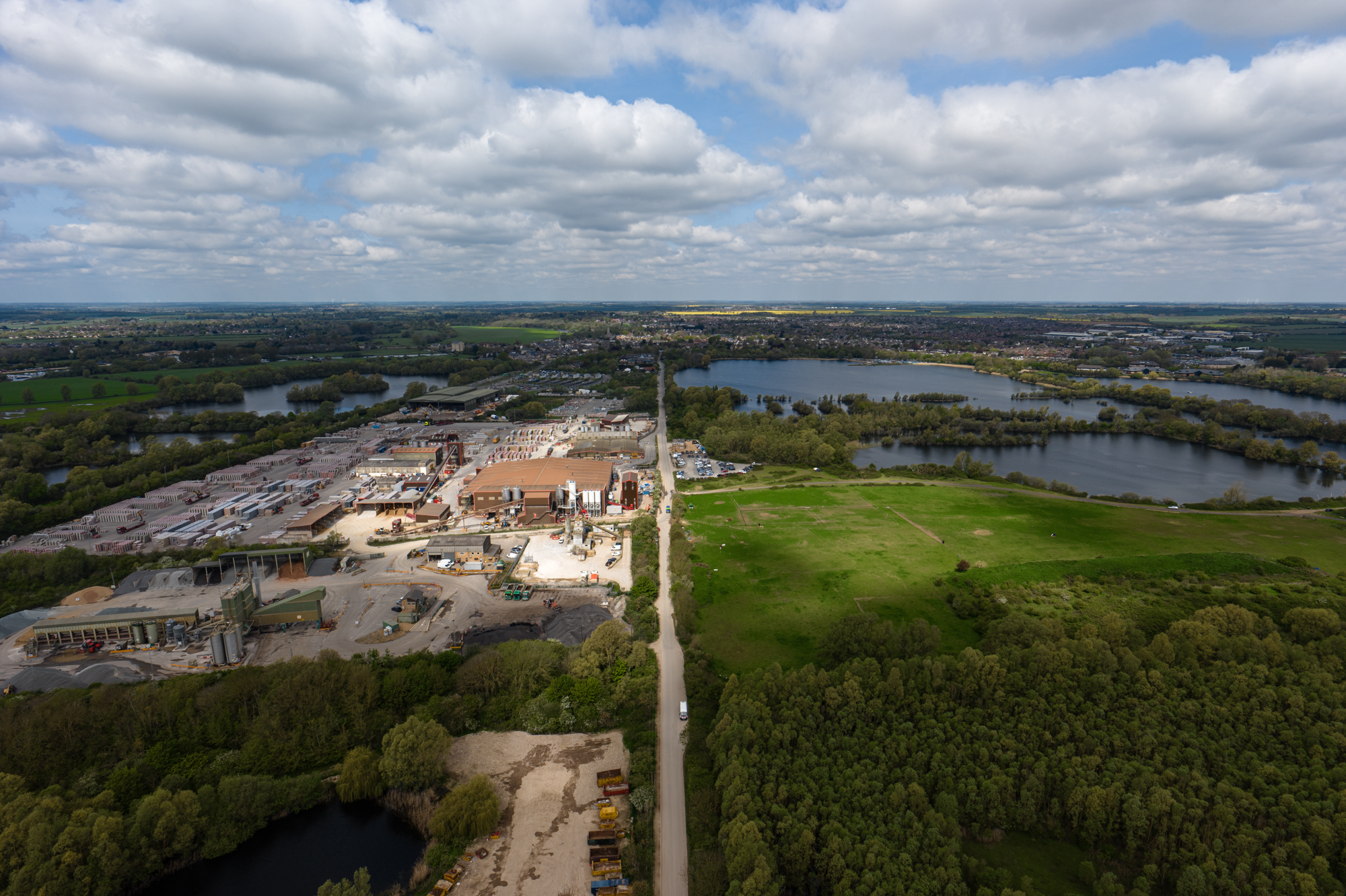
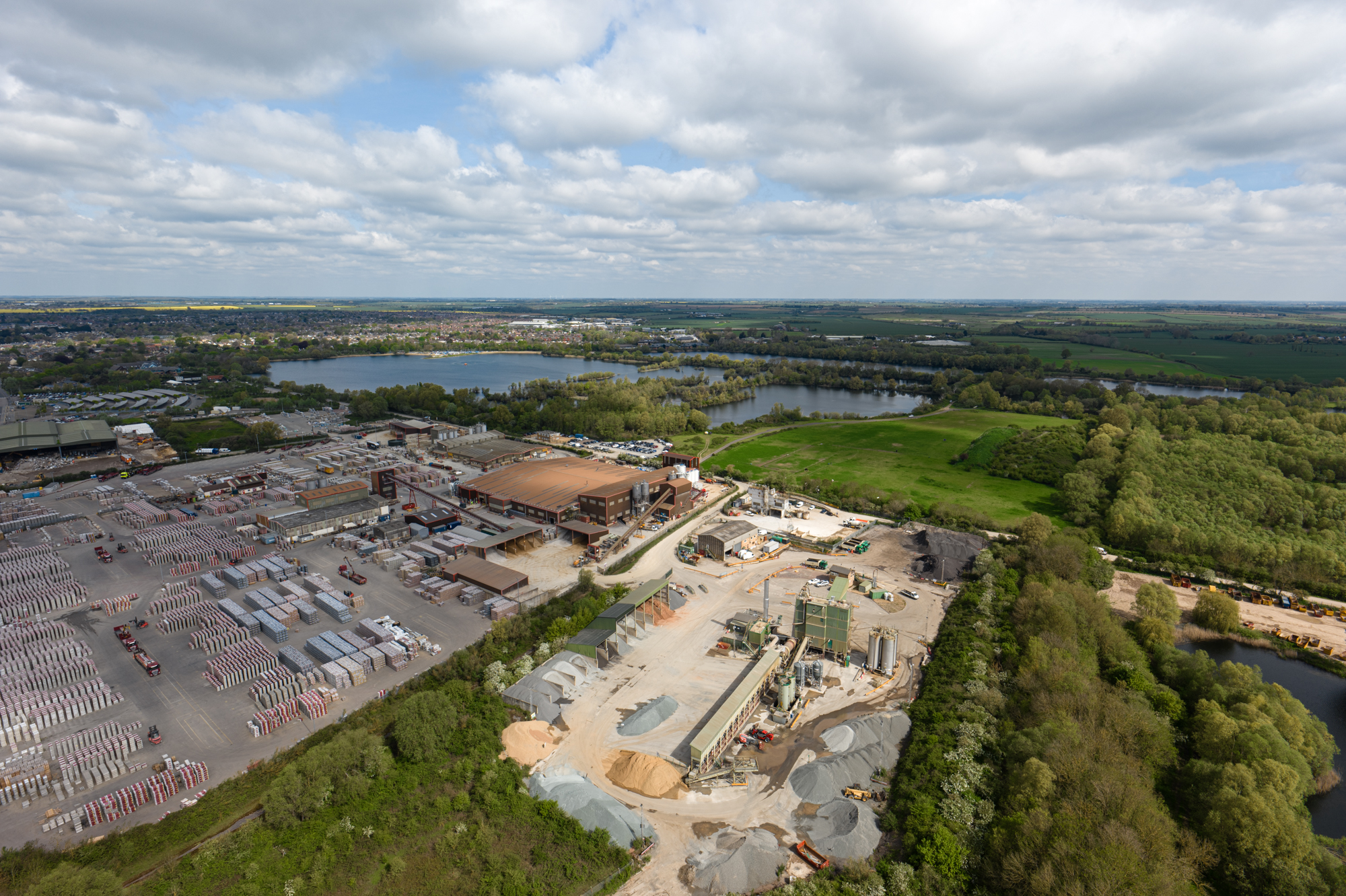
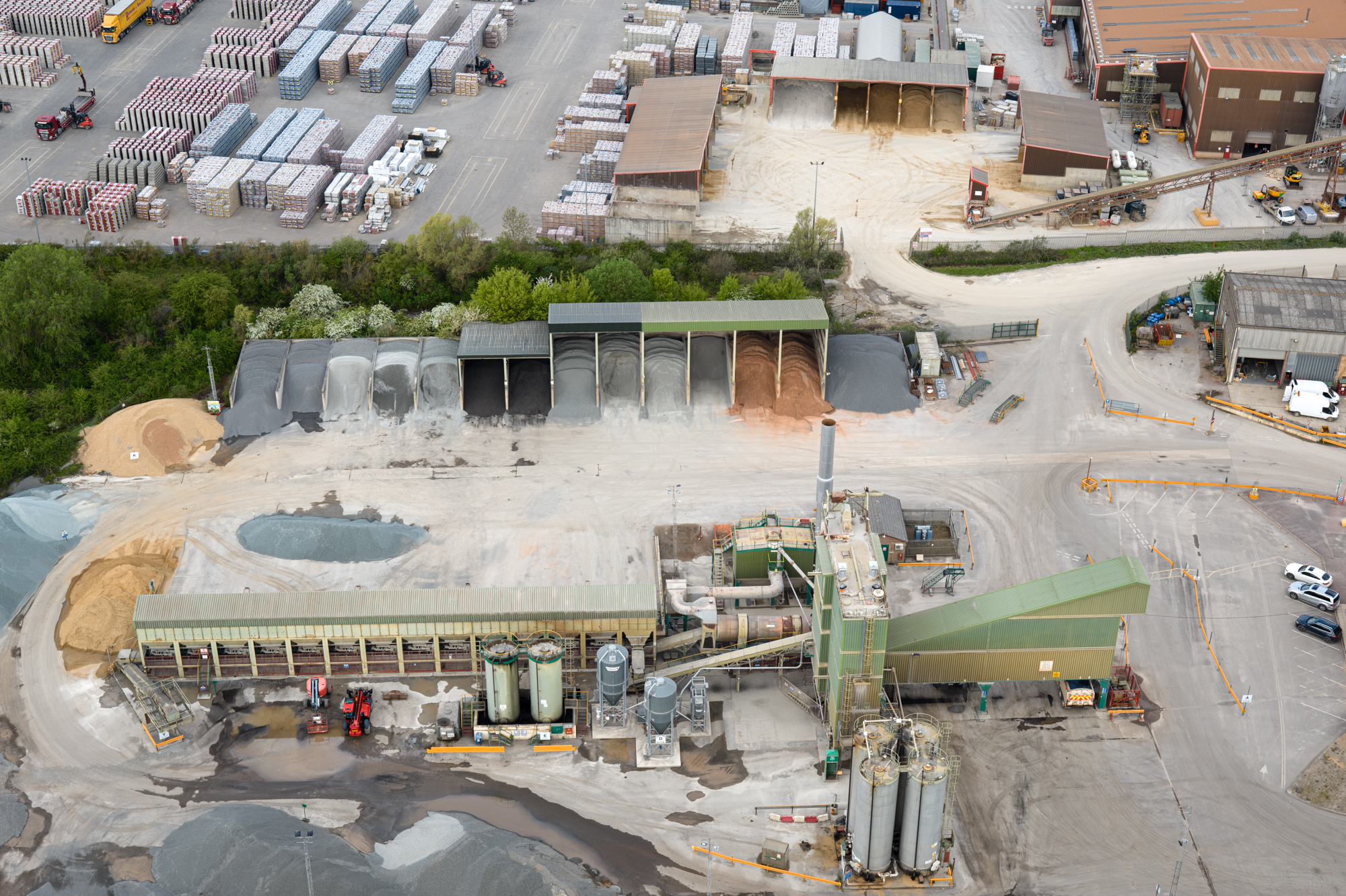
- Excellent image quality for photos and videos
- 44.7MP full-frame CMOS sensor
- Video up to 8K in ProRes Raw & CinemaDNG
With a full-frame camera, image quality is outstanding overall and offers up to 14-stops of dynamic range for photos and videos; it’s as good as a full-frame mirrorless camera but doesn’t offer all of the automated features you would expect with a standard camera. The Zenmuse X9-8K Air Gimbal Camera only offers Program, Aperture Priority, Shutter Priority, and Manual (P, A, S, M) shooting modes, but any shooting technique can still be achieved, albeit manually.
Video is captured in flat/Raw color profiles, so all footage needs to be color graded and processed in video editing software, which is standard within a professional workflow so no surprise here. Video codecs available include ProRes Raw and CinemaDNG, if you purchase the Inspire 3 Raw License, alongside ProRes 422HQ and H.264 which are available natively.
Video can be captured either full-frame or in Super 35 (this uses a smaller portion of the sensor), with the ability to shoot in 8K up to 75fps in ProRes Raw and 8K up to 25fps in CinemaDNG. 4K provides frame rates up to 120fps in all codecs except CinemaDNG, which is slightly lower at 100fps in 4K, so slow motion capture is possible.
For photography, the sensor captures 44.7MP Raw and JPEG files so images can be reproduced at large sizes. The image quality produced by the four lenses is excellent and having 18 mm, 24 mm, 35 mm, and 50mm f/2.8 lenses available allows you to select only the ones that suit your photography and video. And, being a full-frame camera, the fast f/2.8 lenses provide pleasing bokeh that’ll be of most interest in filmmaking.
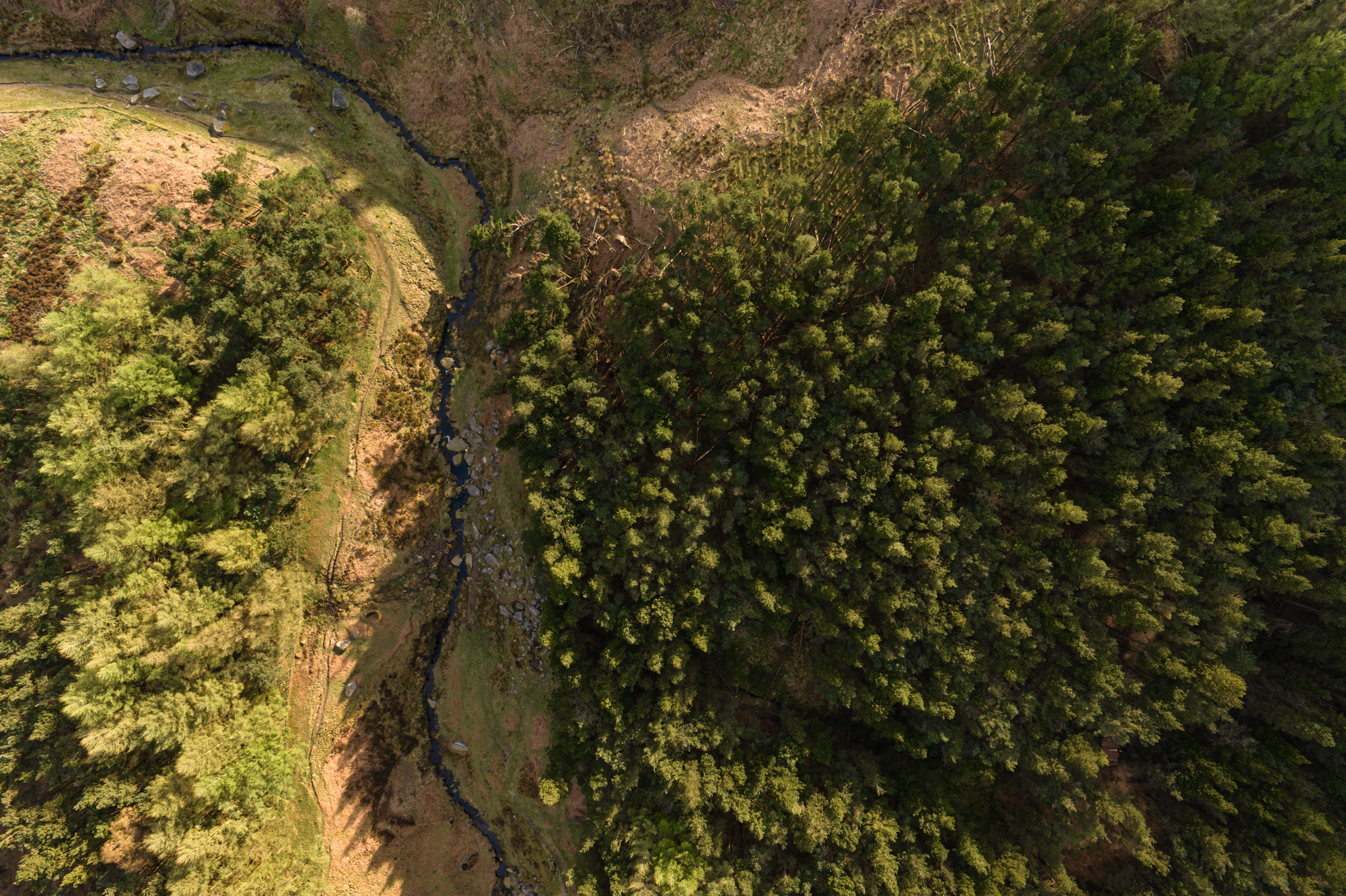
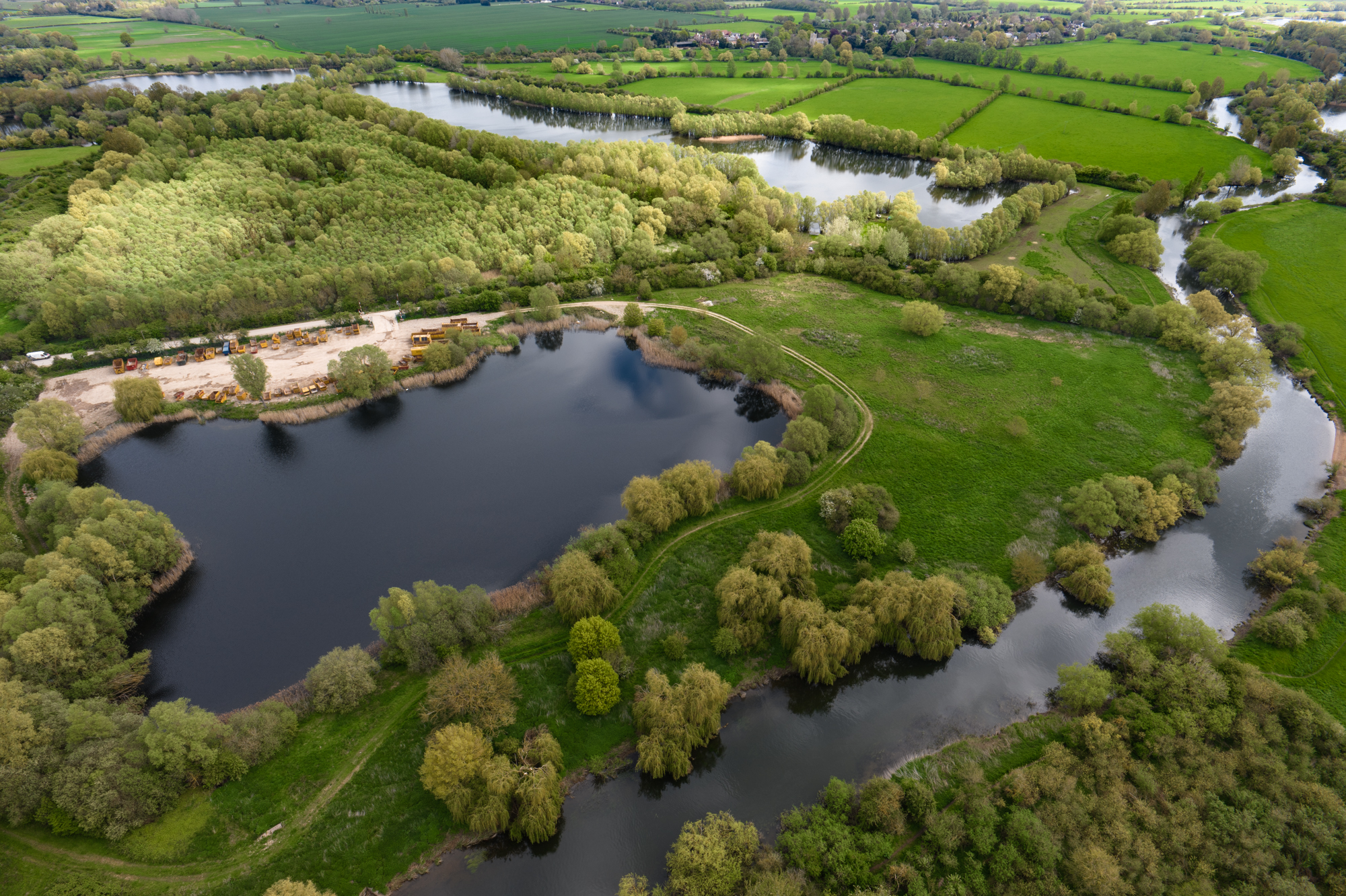
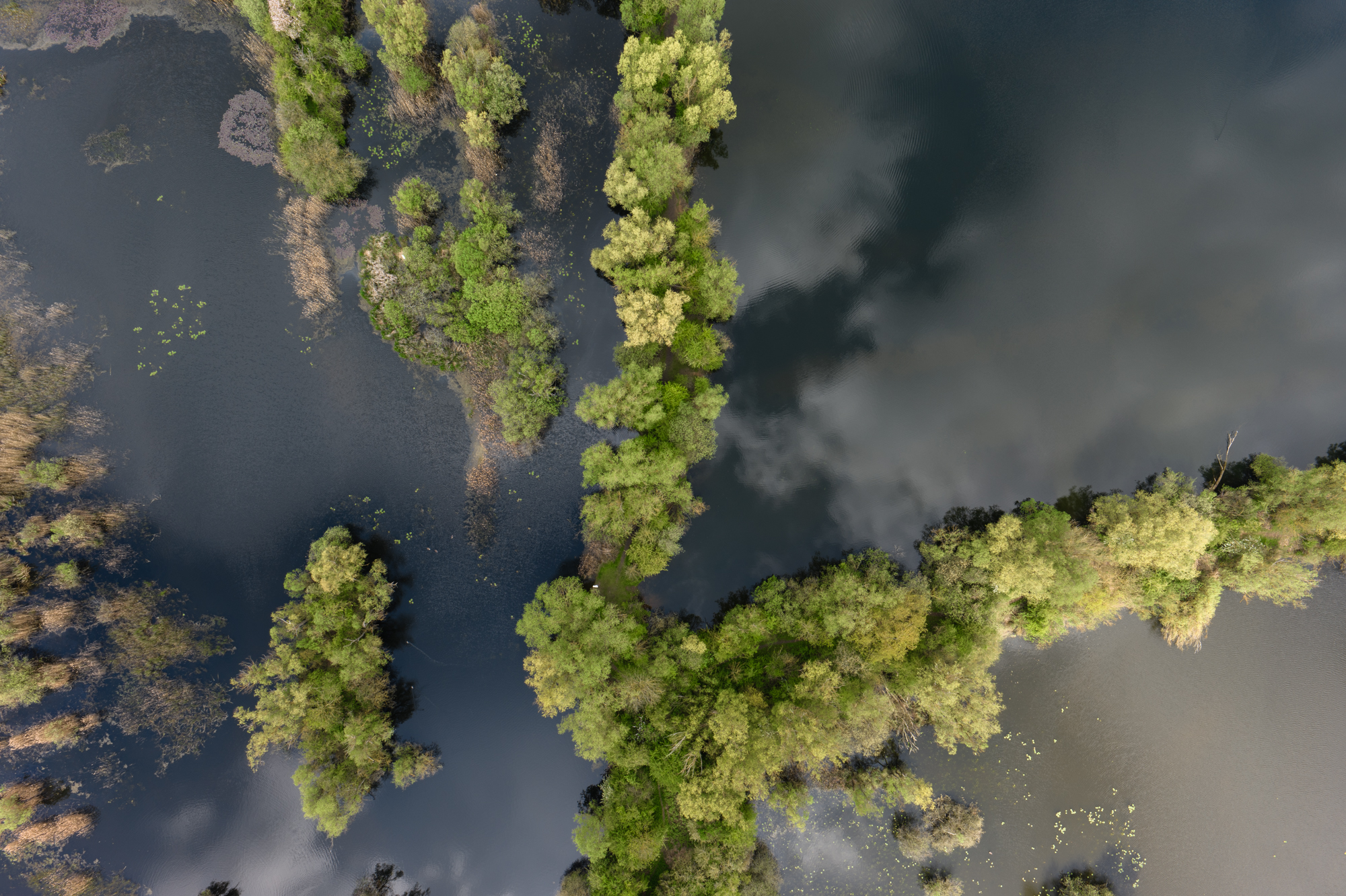
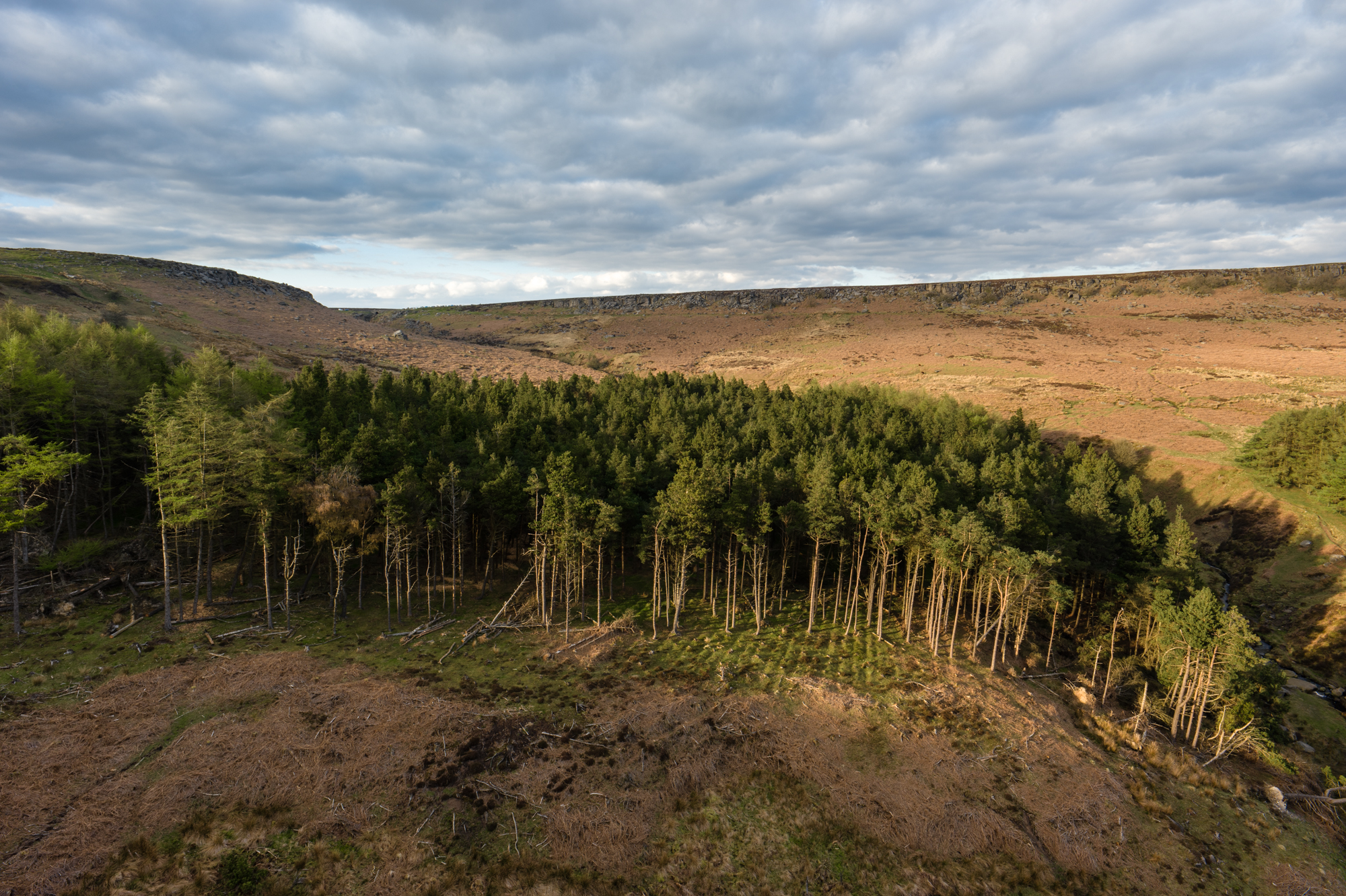
The camera is controlled via the new DJI Pilot 2 app for Inspire with direct access buttons and a jog wheel on the controller for quickly changing exposure settings. The app offers a cinema-grade interface so it’s slightly more complicated than consumer drone apps, plus there’s the ability to sync the timecode between the drone and ground cameras.
DJI Inspire 3 review: Cost
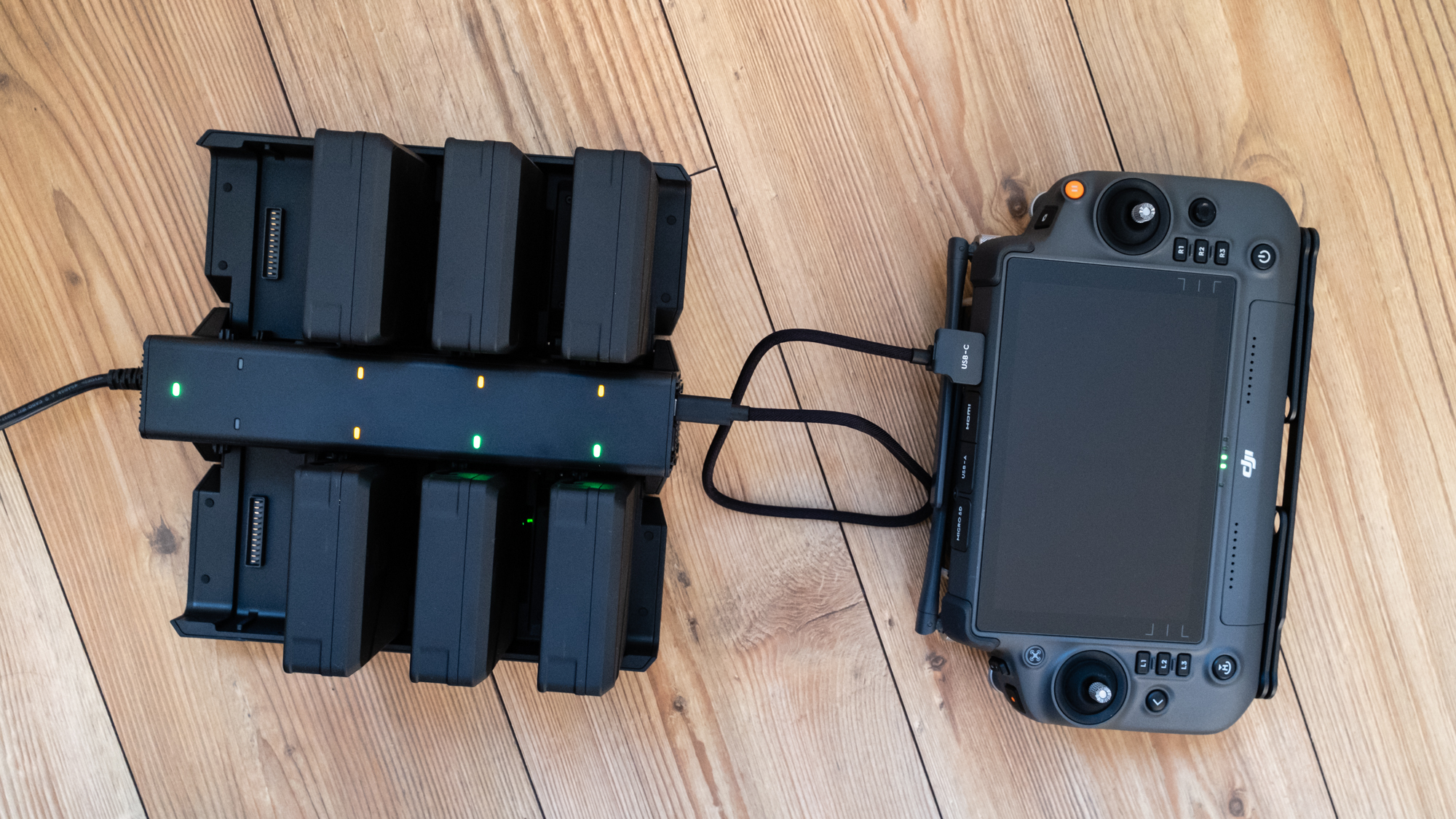
This is a high-spec professional drone with a price to match, so it will be out of reach for most consumers and even many professionals who are served well by mid-size prosumer models. The Inspire 3 Combo kit costs $16,499/£13,419 and includes the DJI Inspire 3, Zenmuse X9-8K Air Gimbal Camera, RC Plus remote controller, 6x TB51 Intelligent Battery, Charging Hub, PROSSD 1TB, Trolley Case, 3x Foldable Quick-Release Propellers (Pair), Lens Carrying Box, RC Plus Strap, and other accessories. No lenses are included, so these need to be purchased separately.
There are four prime lenses available for the Zenmuse X9-8K Air Gimbal Camera including the new DJI DL 18 mm F2.8 ASPH Lens, DJI DL 24mm F2.8 LS ASPH, DJI DL 35mm F2.8 LS ASPH, and DJI DL 50mm F2.8 LS ASPH. These lenses range from $1,199/£1,199 to $1,299/£1,299 so their cost will need to be factored in depending on your requirements. Plus, on top of that the Inspire 3 Raw License for CinemaDNG and Apple ProRes RAW codecs costs $979/£899, so this also needs to be considered if you intend to capture video in these formats.
Should you buy the DJI Inspire 3?
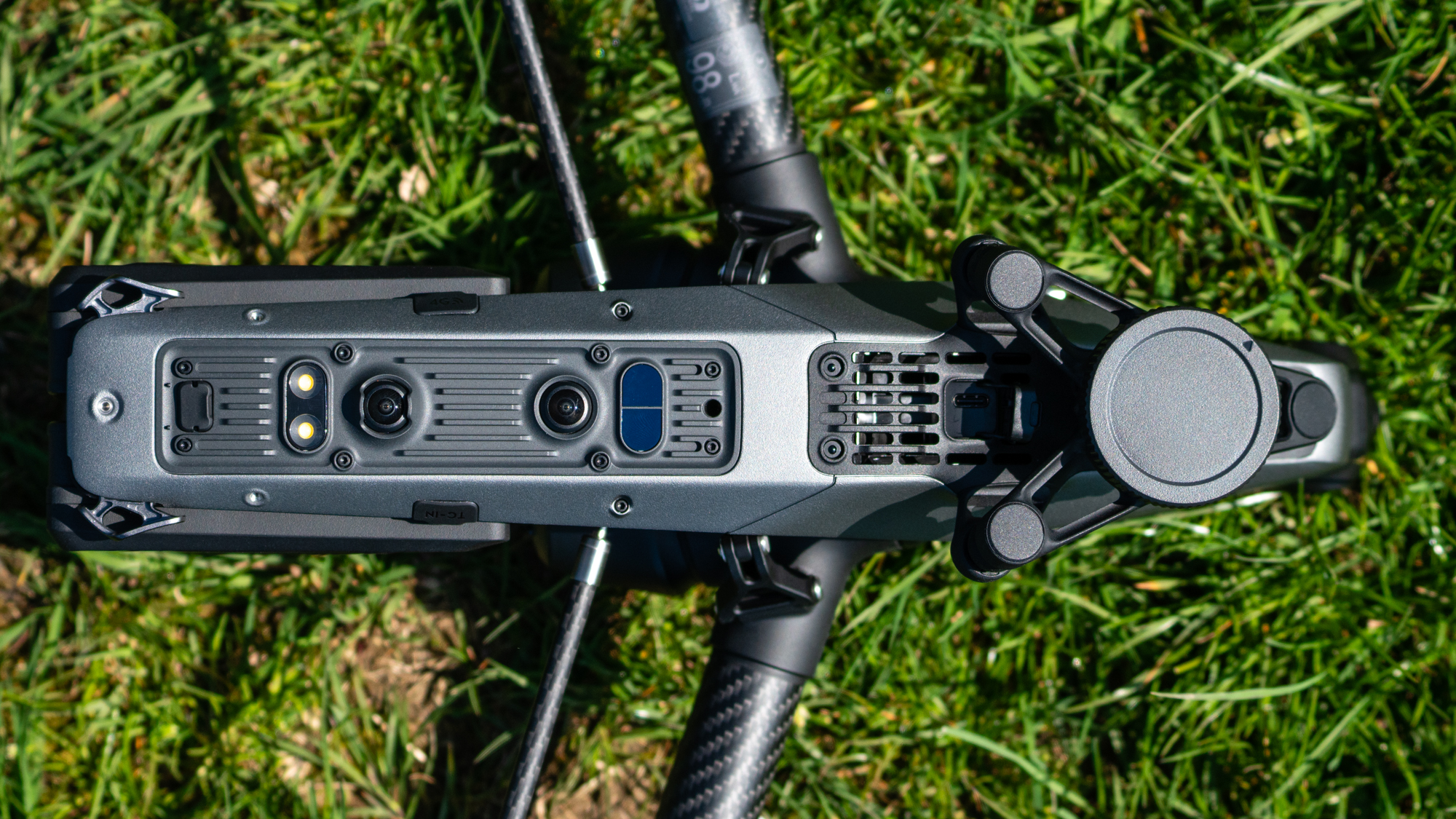
A large and heavy professional drone such as the Inspire 3 isn’t aimed at consumers. Despite this, it’s fairly intuitive to use and also offers additional complexity for more advanced users. It’s certainly not the kind of drone you can throw in a backpack and carry around with you all day. So, unless you’re a professional drone pilot with specific requirements, then this probably isn’t the drone for you.
For professional filmmakers and drone pilots working in inspections and surveying, the flight precision and features available alongside excellent image quality from the full-frame Zenmuse X9-8K Air Gimbal Camera with interchangeable lenses make it a compelling option. This is easily the most intuitive professional drone available. However, in our opinion, it offers more advanced features than most people would ever need or make use of.
If the DJI Inspire 3 isn't for you
Professional drones, including the DJI Inspire 3, may offer the best features and image quality around, but you can still enjoy a highly capable drone in a much more user-friendly package. What’s more, excellent image quality and flight performance can be found in smaller, lighter, cheaper, and, ultimately, more convenient models.
If you’re looking for a portable drone with professional video capabilities and a much more affordable price tag, then the DJI Mavic 3 is a great option. The Four Thirds 20MP main camera produces excellent photos and video suitable for consumer and professional use.
Or, if your budget doesn’t stretch quite so far, the Autel EVO Nano Lite+ features a 1-inch 20MP sensor with similar flight features and power as the Mavic 3 models making it worth consideration.







